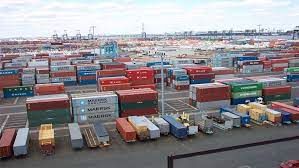
After a decade of controversy, the Canadian government has given the go-ahead for the construction of the Roberts Bank Terminal 2 (RBT2). However, the project must comply with several terms and conditions. Environmental groups, the Longshore Union, and the operator of an existing terminal remain opposed to the project. The construction of RBT2 is expected to take six years, and private investment, bonds, and leasing revenues will fund the project.
The Vancouver Port Authority proposed the terminal expand its container operations. The terminal will be built around 20 miles south of VANCOUVER on the Georgia Strait in the Fraser River Estuary. The project involves creating a man-made island adjacent to the existing terminal operated by Global Container Terminals. The construction will create three new berths, which will increase annual processing capacity by 2.4 million TEUs, a 50% increase.
Environmental groups have been leading the opposition to the terminal, citing reports that the construction would negatively impact the area’s wetlands, barn owls, Dungeness crabs, chinook salmon, sandpipers, shorebirds, and southern killer whales.
In response to these concerns, the government’s approval comes with 370 legally binding conditions to protect the local environment, wildlife, and land-use activities of indigenous people. There are over 100 measures in place to protect local wildlife, such as delaying departures whenever the presence of whales is detected in the area and designing the infrastructure to allow safe passage for the region’s salmon. Other conditions include the use of zero-emission cargo handling equipment and limiting construction to periods when the environmental impact is minimal, among others.
Additionally, the Vancouver Port Authority must guarantee $110 million to ensure that the necessary funds are available for at least the first three years of construction in compliance with the conditions. The government has also required the port authority to be self-funding, meaning they will need to raise approximately $2.5 billion for construction through private investment, bonds, and leasing revenues.
Despite these conditions, opposition groups remain skeptical, arguing that the measures do not go far enough to protect the environment and endangered species.
Follow us on Facebook/ twitter















